Chester & Cooke Updates, Gardening
Why Should I Use Peat Free Compost?
You probably have realised my passions include being eco-friendly & gardening, and hence why I am talking about Peat free compost and also why I have designed my gardening products such as our Seed Box, window sill planter and wooden tool storage rack have come from. This is combined with my love of nature and a keen interest in looking after it the best we can. I decided to follow on from last month’s blog/interview with Karen to concentrate on how we can be more environmentally friendly in the garden, in this blog, I will be looking at Peat & and types of Peat-free Compost and why we should make the change. It will also explain why I use peat-free compost in my window sill planter herb kit.
Peat – What’s all the fuss about?
Sorry I am going to get a little geeky…
From my research into Peat and the issues surrounding it, it initially made me want to remind us of the Lifecyle of all living things. Also know as the Carbon Cycle. Which is key to the problems involving Peat.
So do you remember those school days….
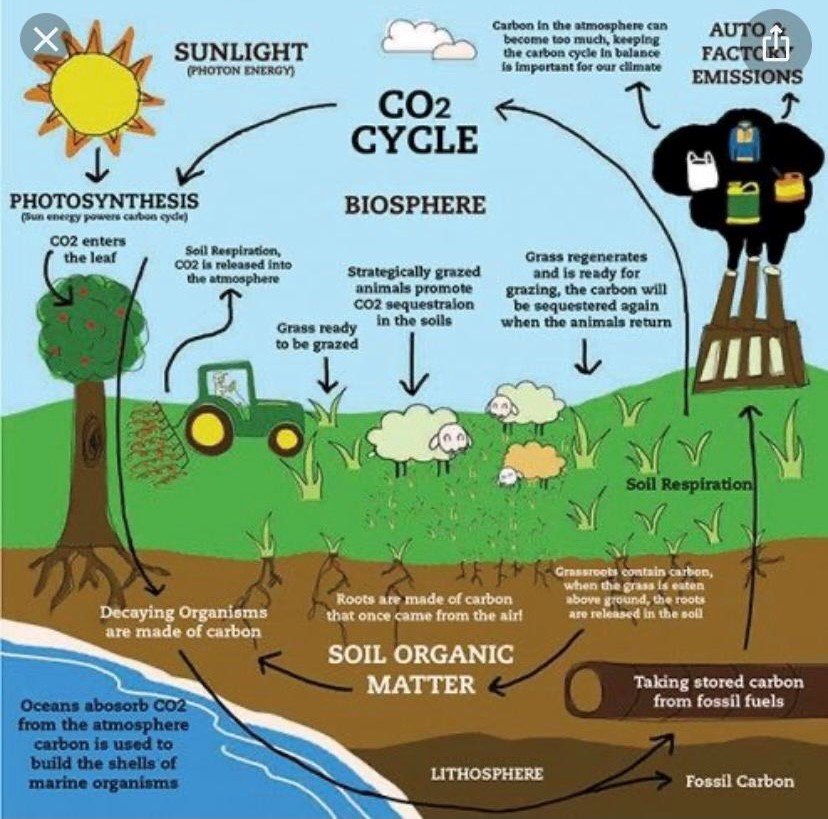
Everything living is made partly of carbon. Whether it be plants or animals.
All living things are all born, die and decompose. This decomposition leads to the release of the carbon that our bodies or vegetation is made from, the planet has stores of carbon in our oceans, rocks and soil but very very gradually this would be released from these stores into the atmosphere, as CO2.
Trees and vegetation use the Co2 in the atmosphere to breathe and it goes back into the soil.
The process can take thousands of years for the carbon to be released naturally from these stores.
The amount of carbon on our gorgeous planet stays consistent. As our planet is a sealed system, gases cannot escape from our atmosphere. The thing that we need to be aware of is where that Carbon is. Is it being held in a carbon store in the ground or Ocean or is it in our atmosphere? The problem is as us humans interfere with nature and Industries release Co2 into the atmosphere, we disturb the natural balance of Carbon in the atmosphere, which it turn leads to very simply the heating of our atmosphere and climate change.
So how does Peat fit into all of this?
Well to put it simply Peat is a massive carbon store.
Peat is an accumulation of partially decaying vegetation. It is unique to natural areas called peatlands or they may be called bogs, moors or fens. The peatland ecosystem covers 1.4 million square miles worldwide and is the most efficient carbon sink on the planet, because peatland plants capture carbon dioxide (CO2) naturally released from the peat, maintaining an equilibrium
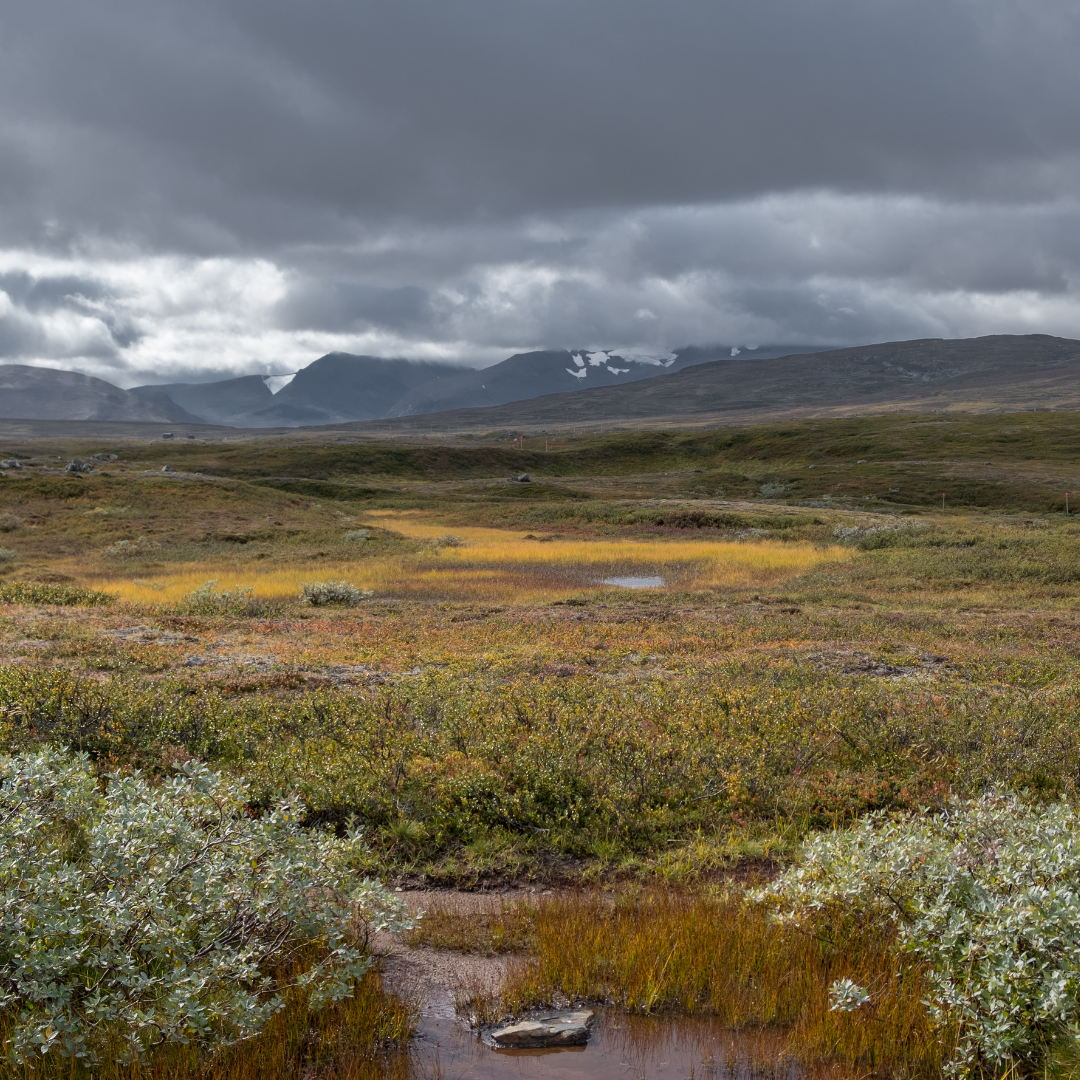
The Awesomeness of Peat
Across the world, peat covers just 3% of the land’s surface, but stores one-third of the Earth’s soil carbon. How awesome is that.
To put it another way Globally, peat stores up to 550 Gigatonnes of carbon, 42% of all soil carbon, which exceeds the carbon stored in all other vegetation types, including the world’s forests.
But it takes thousands of years for peatlands to develop to a depth of 1.5 to 2.3 m, which is the average depth of the boreal northern peatlands, which stores around 415 gigatonnes of carbon (about 46 times 2019 global CO2 emissions).
For many years Peat has been commercially extracted for different uses, in many countries, including Ireland & Scotland peat was traditionally stacked to dry in rural areas and used for cooking and domestic heating.
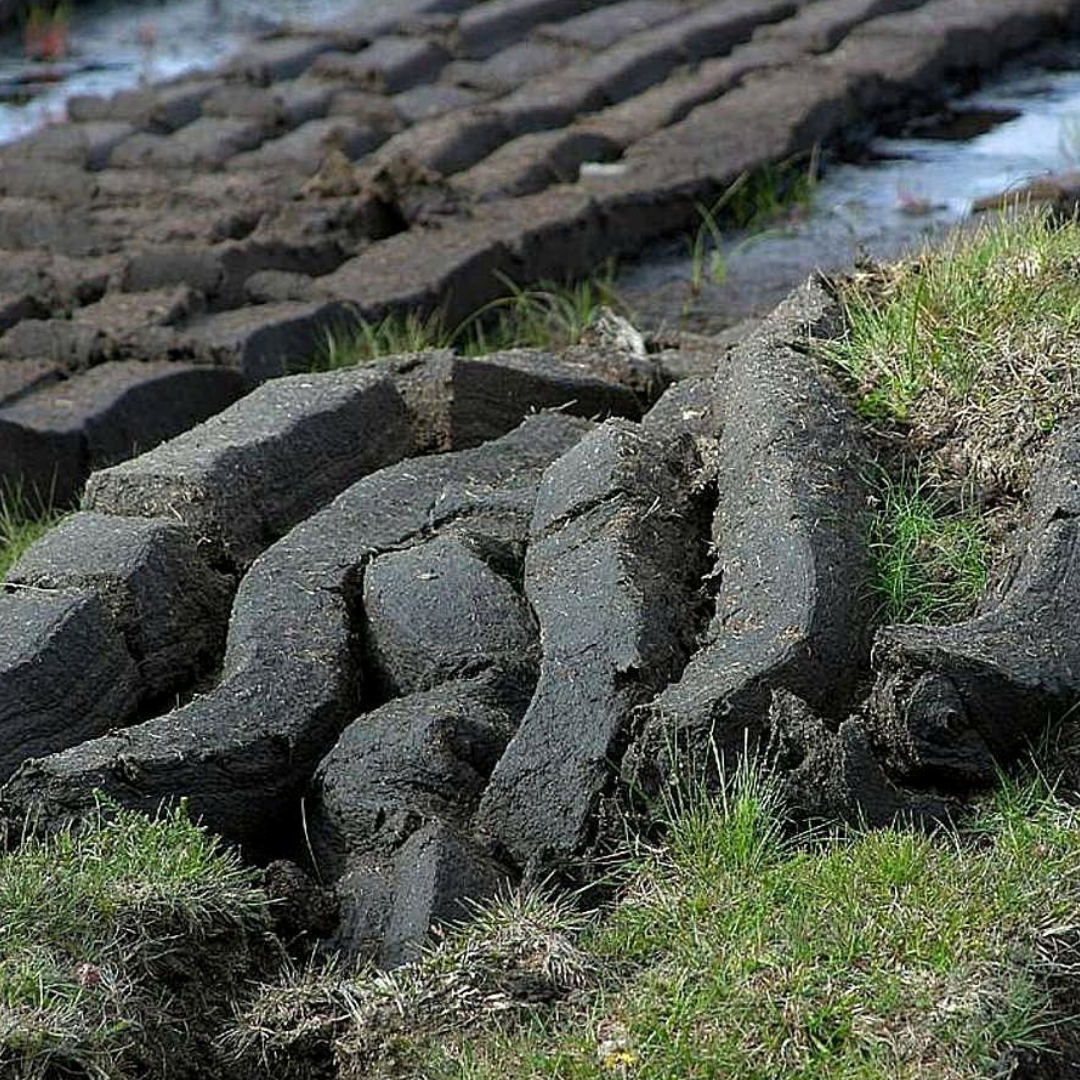
Peat Extraction
In the Republic of Ireland, state-owned company called Bord na Mona was responsible for managing peat extraction. It processed the extracted peat into milled peat which was used in power stations and sold processed peat fuel in the form of peat briquettes which are used for domestic heating. I’m pleased to say in 2020 Bord na Móna ceased all peat harvesting and cutting operations and would be moving its business to become a climate solutions company. Yay – You can read all about their restoration programme and more about it’s importance of Peat on their website.
Countries such as Russia and many European companies also had/have similar peat extraction processes happening on a vast scale.
And as I’m sure many gardeners will know Peat moss is a harvested product for use in garden cultivation. Which we still find today in garden centres.
What does this all mean?
Basically, the process of Peat extraction over the past years has sped up the rate at which Co2 has been released into the atmosphere from our Soil Carbon stores. This in turn causes heating of our atmosphere and ultimately climate change.
Peat is not a renewable source of energy, due to its extraction rate far exceeding its slow regrowth rate. It takes 100’s of years for Peat to form. Centuries of Peat extraction, burning and draining of peat by humans has released a huge amounts of Carbon dioxide into the atmosphere, and much peatland restoration is needed to help limit the impact we have had on climate change.
Some Good news…
Sadly Only 13% of England’s peatlands are in a near natural state however we do have some good news… just recently on the 18th May 2021 the England Peat action Plan was published on the HMRC Gov.uk website which is a real step in the right direction. They have the following goals for this 25 year plan.
- A commitment to restore 35,000 hectares of peatland by 2025.
- By 2030 we want all of England’s soils to be managed sustainably;
- They will bring 75% of Sites of Special Scientific Interest into favourable condition by 2042; and
- They will develop a Nature Recovery Network creating or restoring 500,000 hectares of wildlife rich habitat
If decomposition caused the CO2 what’s the difference between Peat & Compost? Is home Composting Bad too?
I think the key thing to remember here is everything decomposes and causes co2. It is just the natural cycle of returning the carbon to the air that the vegetation took in while it was alive. So my thoughts are “no”, composting is not bad in fact it is far better for you to compost your garden waste and kitchen scraps than sending it to landfill.
Peat is different as the plants that help to make peat such as Sphagnum moss, also called peat moss, is one of the most common components in peat, although many other plants can contribute. The biological features of sphagnum mosses act to create a habitat aiding peat formation, Peat forms in wetland conditions, where flooding or stagnant water obstructs the flow of oxygen from the atmosphere, slowing the rate of decomposition. (hence why it takes so long to form, it is this moss that is the major store of the carbon.
Other differences between peat and compost
| Peat | Garden Compost |
| PH – acidic | PH – neutral or alkaline |
| Not incredibly fertile | Fertile |
| Has nutrients & microorganisms | Full of nutrients and microorganisms |
| Not good as a mulch as it holds so much water | Great as a mulch to retain moisture in the soil
|
The production of garden compost does not create a carbon store so is a fantastic alternative for your garden without impacting the planet.
As you know you can compost at home, there are many great ways to build yourself a compost bin or area, with pallets, or there are plenty of great compost bins on the market.
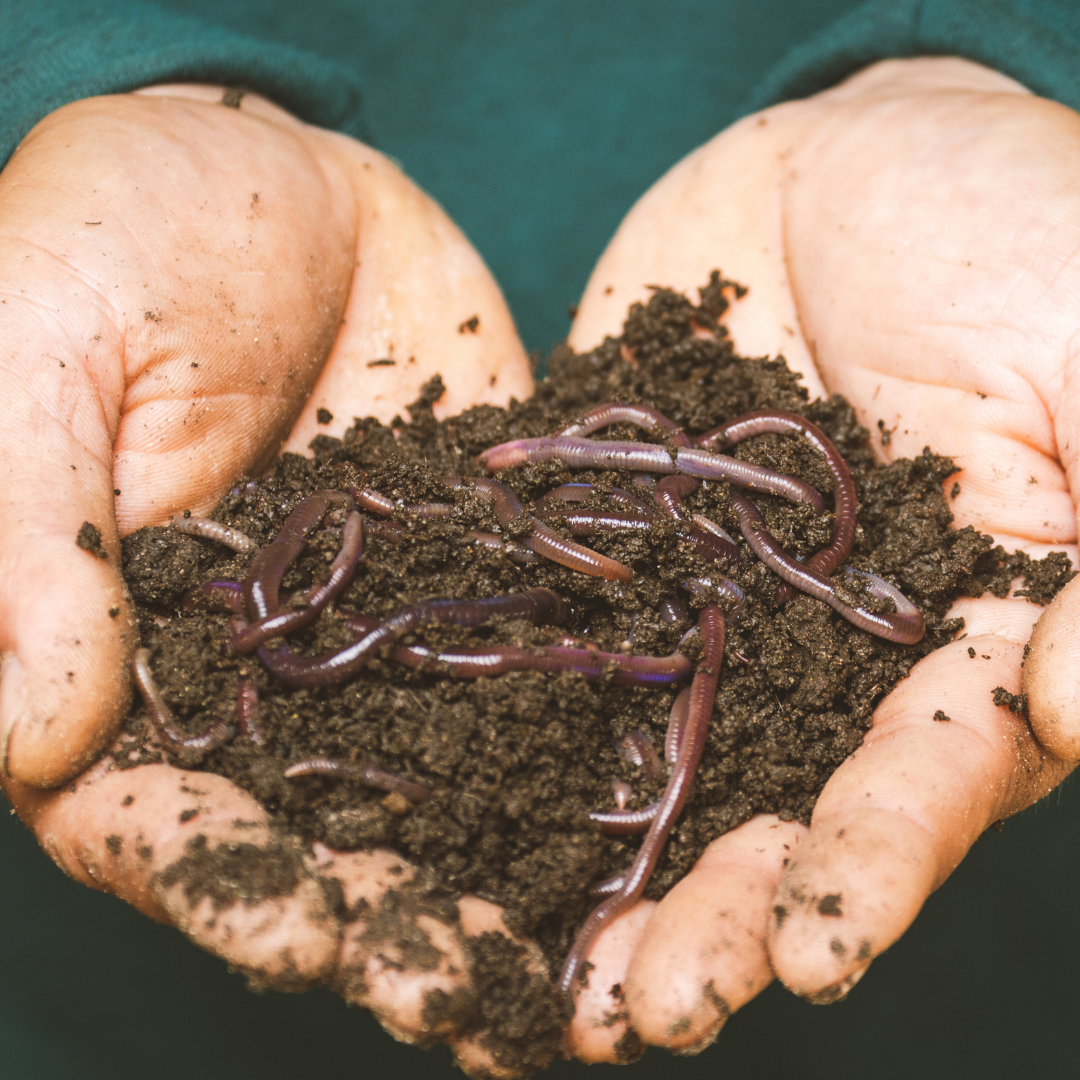
What can we gardeners do? What are the alternatives described as Peat Free compost.
Many gardeners don’t realise that multi-purpose compost, unless it’s labelled ‘peat free’, contains between about 70 per cent and 100 per cent peat. But as you can see we should all be putting our foot down and saying ‘No’ to peat and use an alternative Peat Free compost.
There has been a large growth in the use of peat alternatives by amateur gardeners in recent years but as the total amount of materials we use continues to rise, we’re still actually using approximately the same amount of peat in our growing media as we did in the late 1990s, this is so sad to see but let’s now explore other alternatives.
Wool Compost
An excellent strong, rich multi-purpose peat-free compost made of a blend of sheep’s wool and bracken.
The wool has a high level of nitrogen that works as a slow-release fertiliser and has very good water retention. Bracken gives a high level of natural potash essential for fruiting and flowering. Also has a wide range of naturally occurring trace elements for good plant health.
Mix in with your own compost or soil, for best results. Ideal for use on lighter soils to reduce the problems of drought.
Manure Compost
Manure Compost is a fine blend of organic, well-rotted manure, rotted straw which produces a clean and easy to use fertiliser. You can add manure to your own compost bins. This helps to speed up the process, but you can also buy bagged Manure purposely processed for the gardener. It will improve the structure of heavy clay soils. If you add humus to thin sandy or chalky soils, enrich all soils and supply nutrients for the healthy growth of plants.
I have lots of manure from the horses and this really does make a great addition to your compost bins, your flower beds will love it, it provides a massive boast of nutrients.
Bark Mulch Compost
This is a mixture of decomposing bark, manure, and other composts, great for a soil improver and water retention. Make sure you check the manufacturer that it is peat free.
A mixture of fine bark, coir, sterilised loam, and sand.
There are lots of alternative on the market. Different manufacturers are mixing different combinations of materials to produce composts for different needs.
Coir compost
This is the use of the fibre from coconuts to produce a compost.
Reports list coco as having a water capacity ranging from 8x to 30x it’s own weight. It is an excellent habitat for microorganisms. Free of weed seeds, pests, and pathogens. Breaks down slower than peat due to high lignin content.
I have tried and tested Coco & Coir
I have found this is a brilliant product to use in my window sill planter.
Coco Coir makes use of the fibrous material of the coconut. This is a natural by-product of the coconut farming industry. If it doesn’t have an alternative use it would simply go to landfill so this is a great use of resources.
Coco Coir helps with soil aeration and water retention. It needs less water to achieve the same level of hydration as peat so that’s a win win. Another bonus point is that it is possible to wash and reuse the coco coir. It comes in these dry blocks which you simply add water to hydrate. Which to be honest its not only fun to use but makes it easier to store. Being dried it makes it lighter which again makes it great for my window sill planter kits.
Other benefits of Coco Coir Compost
It was great to watch it increase in size. Reducing the weight & volume by drying also helps to reduce the number of vehicles it takes to transport it. I have considered the fact that coconuts come from as far as India but weighting this up against Peat, and the processing I do not feel there is a comparison regarding the damage to the environment.
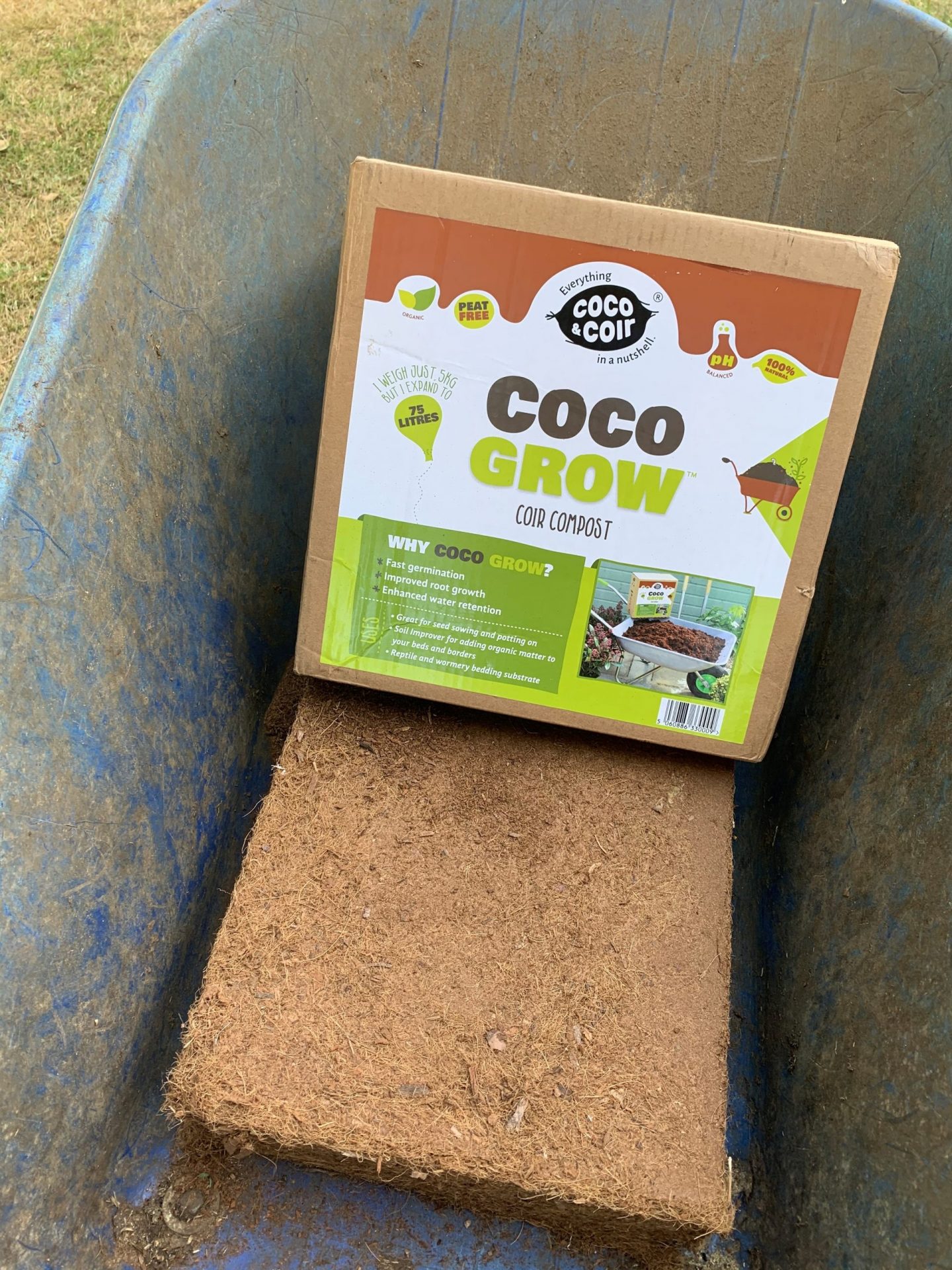
My window sill planter kits for herbs contain everything you need to start your own herb garden. It is a case of just adding water.
In my trial I blended this with my home-made compost and garden soil and was really impressed with the structure. It retains the water well and really lightened the soil. So for me this is something I will add to my go to compost alternatives for my garden. I trial this out for my Window sill planters too and was really impressed.
If you check out the Coco & Coir website, they have lots of fantastic information regarding where their coconuts come from. How they are processed and lots of gardening hints & Tips. Another thing I love about them is their eco-friendly packaging, which is all recyclable.
I now use this Coco Coir compost in my window sill Planter kits.
I really hope you have enjoyed reading about why we should use Peat Free Compost. And I have explained why i use it in my window sill planter kits. Has it persuaded you regarding it benefits? I do hope so, and that you may now seek out other alternatives when we are gardening.



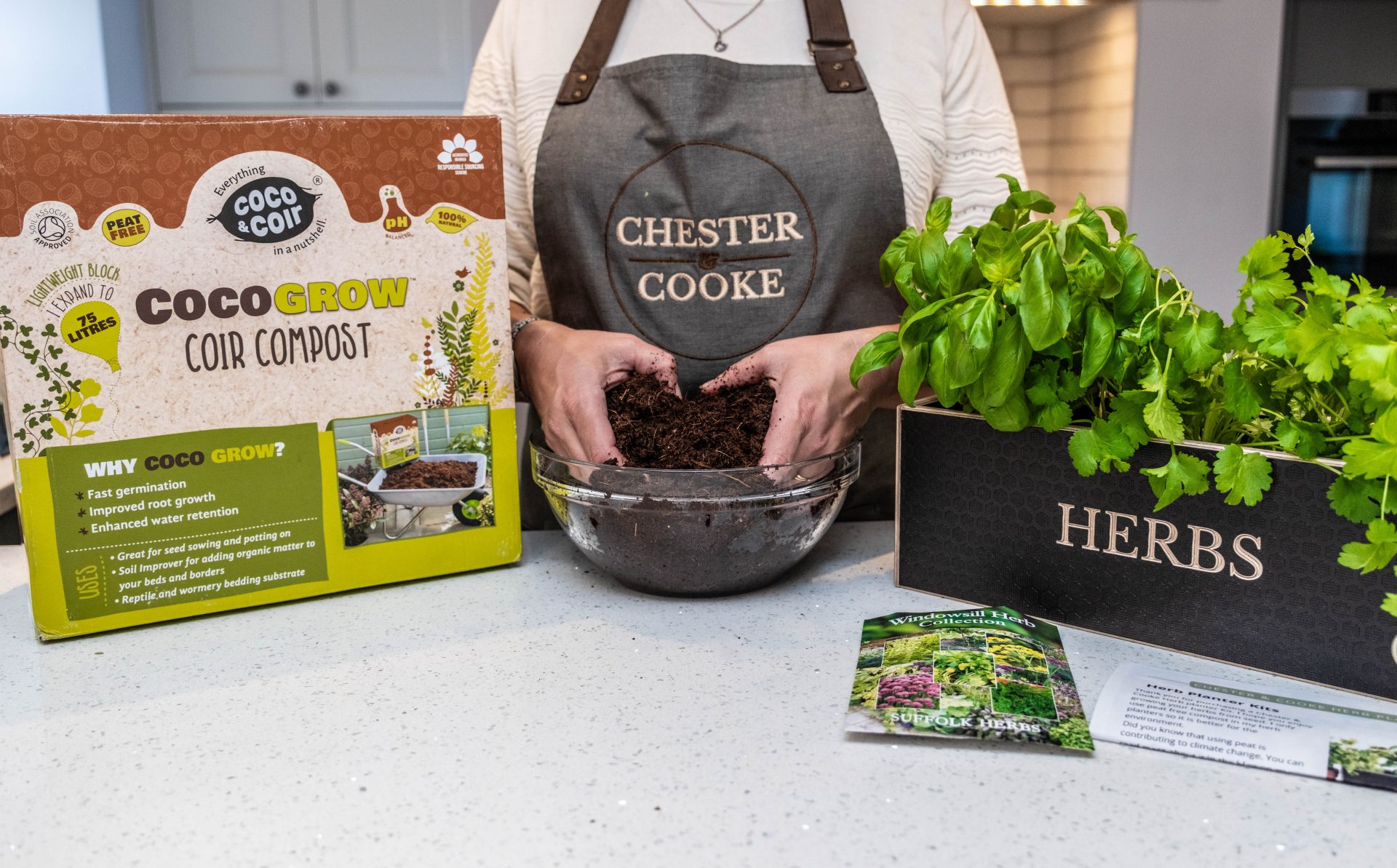
Pingback: 11 Usual gardening gifts for Christmas - Chester Cooke
Pingback: 5 Gardening jobs for February - Chester Cooke
Pingback: 12 Gardening Gifts for her on Mothers Day - Chester Cooke
Pingback: Gardening Jobs For March - Chester Cooke